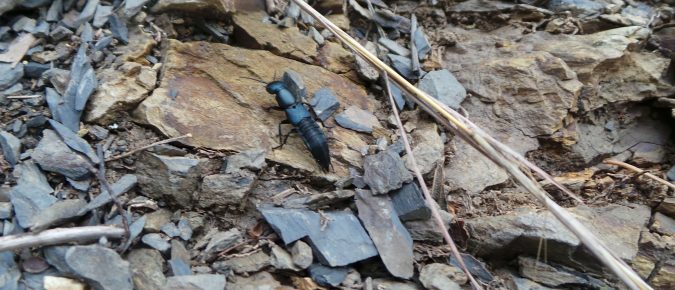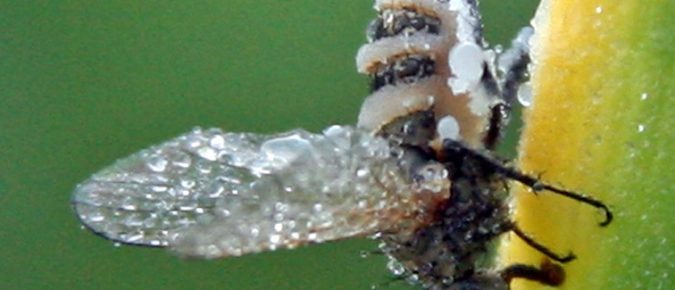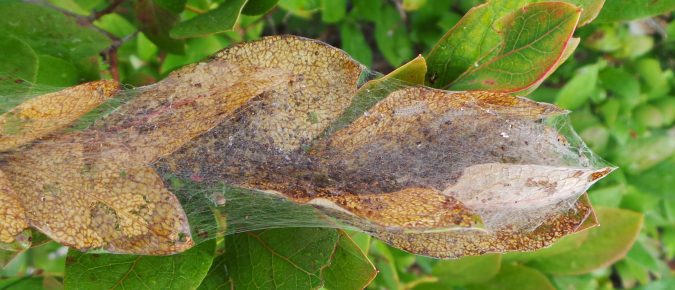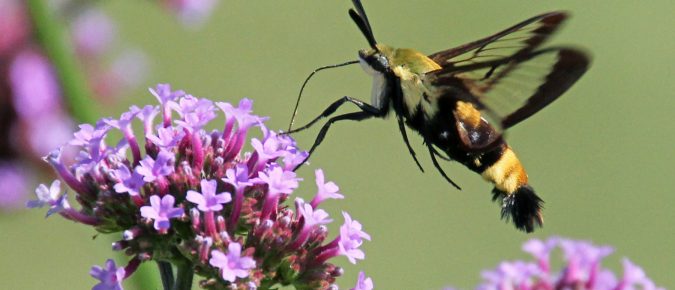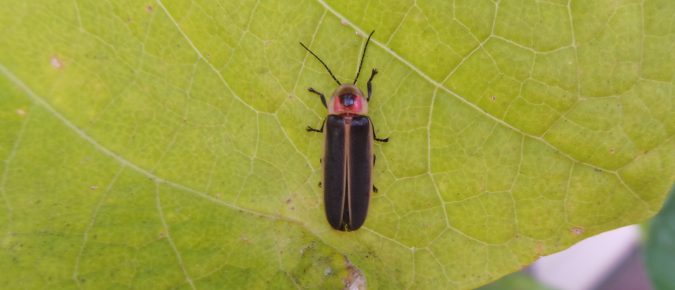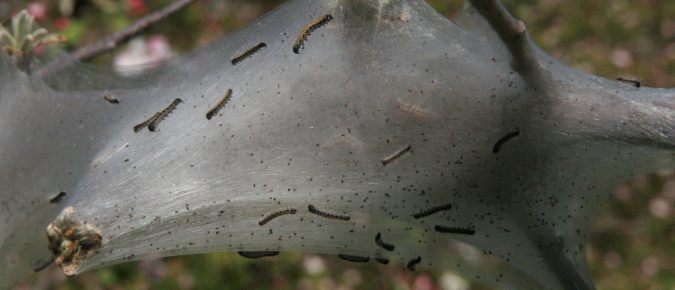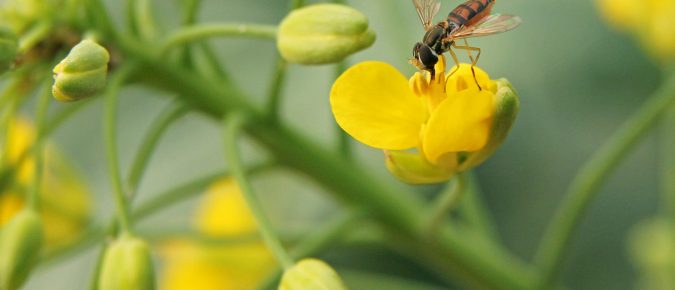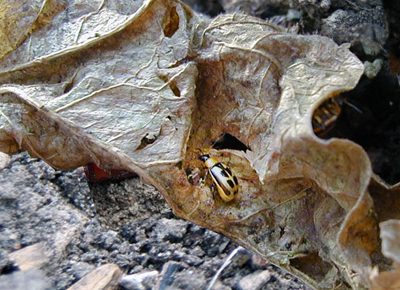There are many beneficial insects that people frequently overlook. One of those groups of good guys are the rove beetles, or staphylinids. Although they are usually small, these beetles are easily recognized by the slender, dark-colored body and an exposed abdomen. To learn more about these beetles read this article…
Have you ever noticed a dead fly hanging with outstretched wings from a flower stalk or glued to the window in your house? These insects likely succumbed to a fungus that only affects flies. This insect destroyer called Entomophthora muscae is actually fairly common, infecting several types of flies related to house flies. To learn more about this fungus, read this article…
Large silken webs on the ends of branches on trees may be the nests of fall webworm, which feeds on many different shade trees and deciduous ornamental trees. To learn more about fall webworm, read this article…
Have you noticed something visiting your flowers, but you aren’t quite sure whether it’s a bee, or a small hummingbird, or a fat butterfly? It’s likely what you saw was a hummingbird clearwing, Hemaris thysbe. It is just one of a number of moths commonly referred to as hummingbird moths. Read this article to learn more…
“Lightening bug” and “firefly” are common names for a number of insects that are neither bugs nor flies. These insects that produce light at night are actually beetles, and are often overlooked during the day as they rest on foliage. Another thing most people don’t know about these insects is that the immature stage is a beneficial predator. To learn more about fireflies, read this article…
Tent-like masses in the forks of tree limbs in early spring are the silken nests of the eastern tent caterpillar.
To learn more about this pest and how to deal with it, read this article…
Are those insects with striped abdomens really all bees? Take a closer look – if they have only one pair of wings, they’re actually a type of fly. Called by various common names, these hover flies or flower flies or syrphid flies are beneficial insects. The adults feed on flowers, but the larvae are important predators of aphids. To learn more about these insects, read this article…
No one likes opening a fresh ear of sweet corn only to find it chewed up and often with a worm inside. The culprit is usually a corn earworm. The caterpillar of this species of moth varies a lot in color but is always seen feeding on the silk end of ears of corn. To learn more about this pest and how to control it, read this article…
Are your green bean plants being chewed up, with lots of round holes in the leaves and nibble marks on the pods? The most likely culprit is bean leaf beetle, a chrysomelid pest that tends to be more common in the southeast, but has outbreaks in southern Wisconsin after mild winters. To learn more about this insect pest and what to do about it, read this article…

